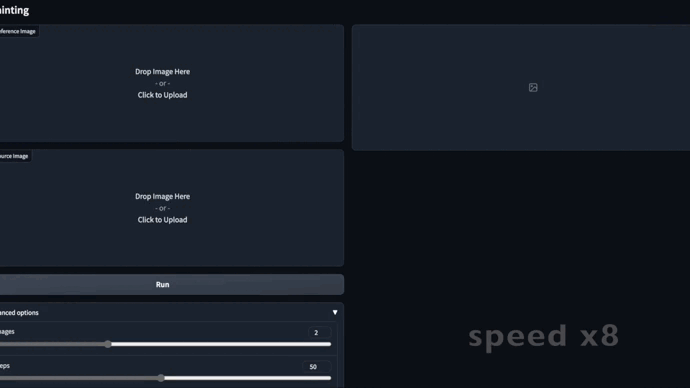LeftRefill: Filling Right Canvas based on Left Reference through Generalized Text-to-Image Diffusion Model (CVPR2024)
This paper introduces LeftRefill, an innovative approach to efficiently harness large Text-to-Image (T2I) diffusion models for reference-guided image synthesis. As the name implies, LeftRefill horizontally stitches reference and target views together as a whole input. The reference image occupies the left side, while the target canvas is positioned on the right. Then, LeftRefill paints the right-side target canvas based on the left-side reference and specific task instructions. Such a task formulation shares some similarities with contextual inpainting, akin to the actions of a human painter.
This novel formulation efficiently learns both structural and textured correspondence between reference and target without other image encoders or adapters. We inject task and view information through cross-attention modules in T2I models, and further exhibit multi-view reference ability via the re-arranged self-attention modules. These enable LeftRefill to perform consistent generation as a generalized model without requiring test-time fine-tuning or model modifications. Thus, LeftRefill can be seen as a simple yet unified framework to address reference-guided synthesis. As an exemplar, we leverage LeftRefill to address two different challenges: reference-guided inpainting and novel view synthesis, based on the pre-trained StableDiffusion.
- Releasing training, inference codes of Ref-inpainting and NVS (1-reference).
- Releasing pre-trained Ref-inpainting weights.
- Releasing codes of data processing (Megadepth, Objaverse).
- Releasing codes of multi-view LeftRefill.
Since our Ref-inpainting model only contains 50 trainable tokens (704KB), weights are saved in checkpoints/ref_guided_inpainting.
Before the inference, you need to download SD2-inpainting model from here,
and place it at ./pretrained_models/512-inpainting-ema.ckpt
You can simply use gradio to test reference-inpainting with custom masks.
python ref_inpainting_gradio.pyCUDA_VISIBLE_DEVICES=0,1 python train_inpainting.py \
--config_file configs/training_config.yaml \
--exp_name RefInpainting_V0 \
--ngpu 2 \
--fp16CUDA_VISIBLE_DEVICES=0,1 python train_inpainting.py --config_file configs/nvs_training_config.yaml \
--exp_name NVS_OBJ_V0 \
--ngpu 2 \
--fp16CUDA_VISIBLE_DEVICES=0 python test_inpainting.py --model_path check_points/ref_guided_inpainting \
--batch_size 1 \
--test_path ./data/megadepth_0.4_0.7/match_test_image_pairs \
--cfg 2.5 \
--test_size 512 \
--metric_size 512 \
--eta 1.0 \
--output_path test_outputs_compareIf you found our project helpful, please consider citing:
@inproceedings{cao2024leftrefill,
title={LeftRefill: Filling Right Canvas based on Left Reference through Generalized Text-to-Image Diffusion Model},
author={Chenjie Cao and Yunuo Cai and Qiaole Dong and Yikai Wang and Yanwei Fu},
booktitle={Proceedings of the IEEE/CVF Conference on Computer Vision and Pattern Recognition},
year={2024},
}
